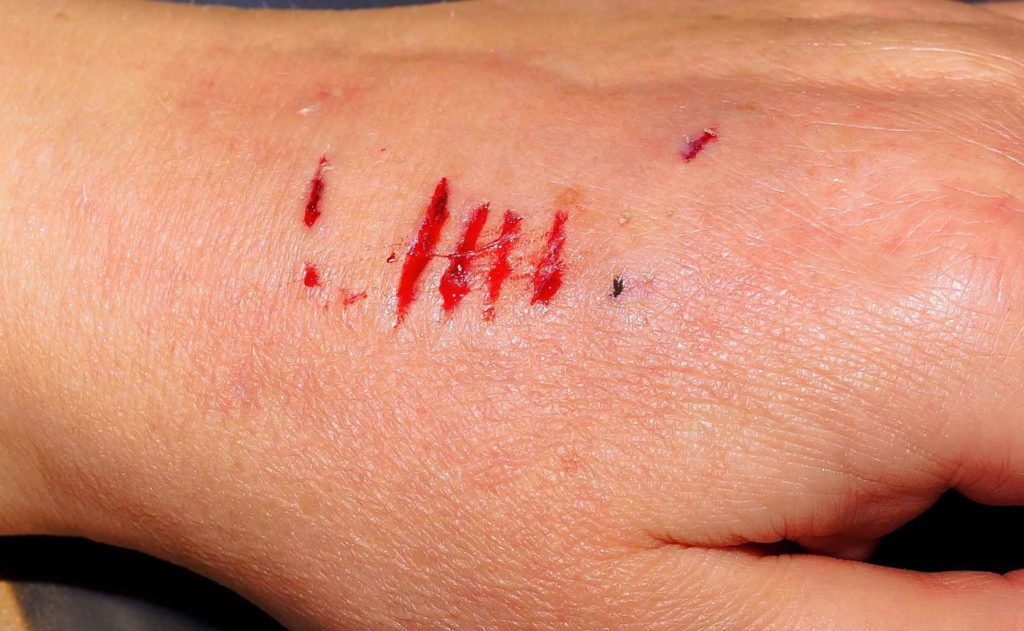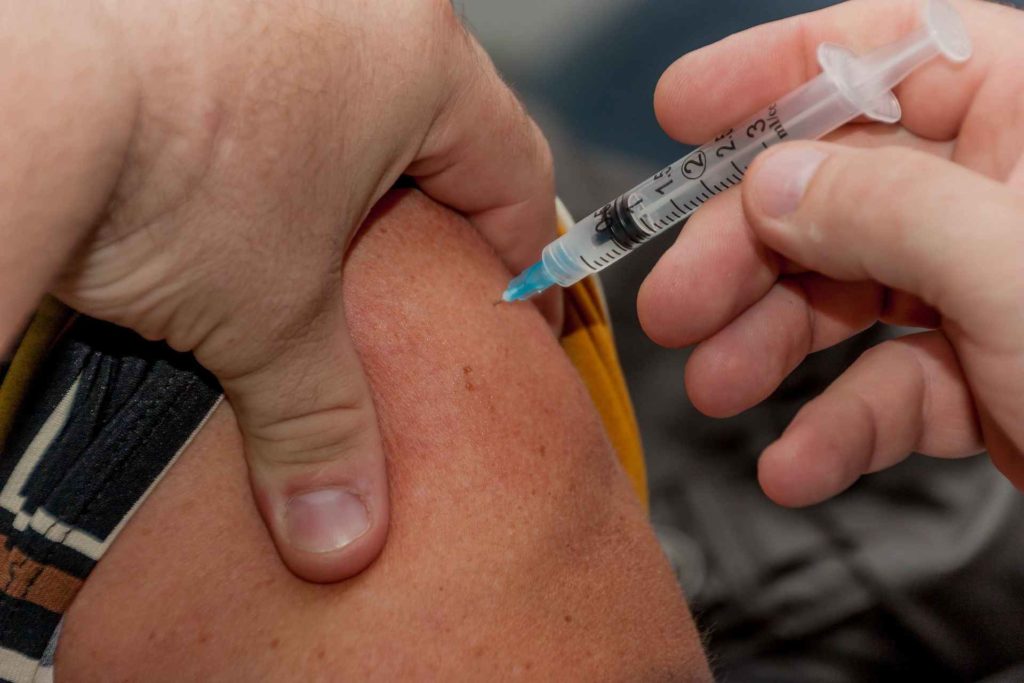The American Veterinary Medical Association data revealed that US households have almost 85 million dogs. And millions of people suffer from animal bites each year. In fact, in 2018, dog bites were one of the leading causes of non-fatal emergency visits in the US.
Dog bites cause severe harm to children and adults, physically and psychologically. These attacks involve violent bites and may even knock the victim over, leading to bruises, cuts, sprains, etc. Other possible consequences of a dog bite injury include tetanus and rabies infections, which may be life-threatening if untreated.
You could file a personal injury or
Personal injury lawyers specializing in dog bite cases can help victims recover damages for their losses. It is especially true for those whose dog bite wounds developed a tetanus infection. They may seek compensation because it is a severe injury with long-term consequences.
Law firms usually offer free consultations for interested clients, where they review the case at hand and provide legal advice.
Key Takeaways
|
What is tetanus?
Dog attacks do not just cause wounds and bruises. Sometimes infections can also develop from animal bites. An animal’s mouth or saliva has bacteria that may enter the wound of a bite injury. According to Healthline, animal bites are polymicrobial, meaning multiple species of bacteria can be present.
It is from these bacteria that a tetanus infection or lockjaw might develop. Clostridium tetani bacterium affects the nervous system and becomes a life-threatening disease. The CDC, or Centers for Disease Control and Prevention, states tetanus gets in through broken skin, like puncture wounds from animal bites. It includes:
- Burns
- Crush injuries
- Injuries with dead tissue
- Wounds contaminated with saliva, dirt, or feces
The CDC revealed tetanus bacteria also could enter someone’s body in other ways. It includes surgical procedures, dental infections, insect bites, fractures, intravenous drug use, etc.
Signs of infection from tetanus appear three to 21 days from the day of inoculation with the bacteria. Symptoms of generalized tetanus, the most common type, usually start from the jaw and progress down the body.
It includes rigidity or painful muscle spasms of the neck or jaw, tension around the lip muscles, and difficulty swallowing. Sometimes, it can also cause abdominal muscles to become rigid.
Tetanus has no cure and can even develop into serious complications. Generally, tetanus treatment involves managing the symptoms until they resolve.
Effects of an Animal Bite
Dog or cat bites can cause one of four types of wounds. It can be a bruise, scratch, cut, or puncture wound.
Bruises present no risk of infection as there is no skin breakage. Scratches or scrapes have a low chance of infection because they do not penetrate more than the other skin layer.
On the other hand, cuts and puncture wounds have a greater risk of bacterial infection. Cuts go through the skin to the muscle tissue or fat. Immediately cleaning the cut or wound may help prevent disease, but these wounds may also require antibiotic drugs.
Aside from tetanus, dog and cat bites can result in infections like rabies, cellulitis, and capnocytophaga. In extreme cases, these infections can lead to sepsis, a life-threatening medical emergency.
Rabies
Rabies is a viral infection found in the saliva of dogs and cats infected with the virus. It affects the central nervous system of mammals and causes brain disease. However, rabies vaccinations can prevent its transmission. All states legally require rabies vaccination of pet dogs and cats in the US.
If you have exposure to the rabies virus, symptoms may present in a few weeks to a few months. It depends on the location of the bite, the type of virus, and your level of immunity.
Symptoms of the infection in people are primarily similar to the flu. According to the CDC, signs include discomfort, weakness, headaches, or fever. The site may also feel itchy or prickling for several days.
There is no way to cure rabies once it takes hold. If you suspect you have exposure, get a series of shots to prevent it from happening.
Cellulitis
Cellulitis is a skin infection from bacteria in dogs’ mouths, such as Pasteurella multocida and Pasteurella canis. It can spread fast if left untreated, especially in children.
Usually, symptoms of cellulitis appear within the first day of injury. Signs include swelling, redness, tenderness, and pus discharge from the wound. Blisters may also appear on the affected site and look pitted, resembling an orange peel. In some cases, people with cellulitis will develop fever and chills.
Various health factors increase the risk of developing cellulitis. It includes being overweight and having swollen limbs from chronic edema, lymphedema, and coronary artery bypass grafting.
Cellulitis can also develop into severe health complications like bone infection, bacterial infections in a joint, and blood infections. Treatment typically involves oral antibiotics, and the symptoms should resolve within a few days.
Capnocytophaga
Capnocytophaga are bacteria that live in the mouths of dogs, cats, and even people. This bacteria is usually harmless but can sometimes develop into opportunistic infections. It means they can cause infections under the right conditions, like in a person with a weak immune system.
For instance, a person who drinks alcohol excessively, has cancer, or is positive for HIV is more prone to get it. Capnocytophaga can present as gum disease, eye infections, or respiratory tract infections.
Symptoms of capnocytophaga appear from one to 14 days after an injury. Warning signs include blisters, fever, diarrhea and vomiting, joint pain, and headaches.
Capnocytophaga may also develop into severe complications. It may cause heart attacks, kidney failure, or gangrene without treatment. In some cases, it can also result in the amputation of an affected limb.
Sepsis
Sepsis is a life-threatening reaction to animal bite infections. In a typical year, more than 350,000 with sepsis die during hospitalization. It occurs when an infection triggers a domino effect of complications throughout one’s body.
Usually, it starts in the skin, lungs, gastrointestinal tract, or urinary tract. Left untreated, it can cause organ failure, tissue damage, and death.
Symptoms of sepsis include disorientation or confusion, high heart rate, extreme pain, fever, shortness of breath, and sweaty skin. Persons exhibiting signs of sepsis should seek immediate medical attention to prevent further complications.
Things To Do Right After a Dog Bite


Dog scratches or bites can lead to infection, however minor. It can infect and spread bacteria to other body parts, which may lead to life-threatening complications.
If a dog bites you, staying calm and immediately tending to the wound to prevent infection is crucial. Various ways exist to perform first-aid on a dog bite before seeking medical attention.
Minor wounds or shallow bites
It is easier to treat superficial bites that do not pierce the skin as they have little to no infection risk. You don’t need to worry as much if the bite was from a vaccinated household pet and is in excellent health.
- Wash the wound with soap under running water for at least five minutes. Not scrubbing the affected area is essential to prevent bruising the tissue.
- Apply an antiseptic cream or lotion on the site of the wound.
Look for signs of infection in the affected area, like swelling, drainage, or increased redness. If the injured victim develops a fever, seek medical treatment immediately.
Puncture wounds or deeper bites
Treating puncture wounds with the utmost care is crucial, as dirty wounds have a greater risk of infection. If the affected area is crushed, torn, or bleeding profusely, follow these simple steps to mitigate further bleeding:
- Apply pressure to a bleeding bite or scratch with a clean cloth to stop bleeding.
- Wash the area with soap under running water for at least five minutes without scrubbing the affected area.
- Dry the wound and wrap it with a clean bandage. Do not use tape to close the area, as it may trap harmful bacteria inside the wound.
Seek medical care immediately after performing first-aid to determine if additional treatment is needed, like vaccines or antibiotics. Likewise, if you develop a headache, fever, swollen glands, or decreased appetite after the injury, seek medical advice immediately.
Animal Bite Treatment


Injured victims of dog attacks should see a healthcare provider, especially if they have deep puncture wounds. Doctors should evaluate and treat injuries as soon as possible to lessen the risk of infection.
There are a few other factors to consider if you should seek medical care immediately. For instance, the attack happened in an area where animal immunization to prevent the rabies virus is not usual. Injured victims have a higher risk of infection if:
- The animal bite punctured the skin, and have not stopped bleeding for more than 15 minutes
- The attack fractured a bone, or there are other severe injuries
- They have pre-existing health conditions, like cancer, liver disease, diabetes, HIV, or are taking medication that weakens the immune system.
Antibiotics
Healthcare professionals usually recommend oral or intravenous antibiotics to injured victims with high-risk wounds. Usually, hand wounds, crush injuries, and puncture wounds are more likely to be infected than tears or scratches.
Appropriate treatment for dog bite wounds entails taking prophylactic antibiotics for several days to a week. The duration of medication varies depending on the severity of the injury. For instance, cellulitis infection is evident in the wound. Then, American Family Physician suggests taking antibiotics for 10 to 14 days is more appropriate.
Tetanus toxoid vaccine
Tetanus infection can be life-threatening for dog bite victims. Adults should obtain a tetanus vaccine if it has been more than five years since their last tetanus shot. Likewise, bacteria from a cat’s mouth can infect its scratches. Cat scratch disease can develop from a kitten’s scratch even if it does not look infected.
Similarly, children should receive post-exposure tetanus prophylaxis after a dog attack to avoid tetanus infection. Victims should do the same under the following scenarios:
- They received less than three tetanus vaccine doses
- The wound is clean, but it has been more than 10 years since their last tetanus shot
- The wound is dirty, but it has been more than five years since their last tetanus shot
Rabies shots
Your healthcare provider should give Human rabies immune globulin (HRIG) and the first rabies vaccine immediately after exposure. This process is called postexposure prophylaxis (PEP).
Doctors inoculate the rabies vaccine on the day of the injury and again on the 3rd, 7th, and 14th days following it. If the injured victim received rabies shots before the injury, they should receive a rabies vaccine only.
HRIG consists of antibodies that fight the rabies virus and offers immediate protection against its transmission. Meanwhile, the rabies vaccine signals the body to produce antibodies and provide protection within several days.
Who is at fault if a dog bites me?
Dog attack liability laws vary from state to state. Triple-I states liability does not automatically apply to the dog’s owner in 17 states and the District of Columbia. Laws in these states may also classify dog attacks as misdemeanors or even felonies, with fines.
However, no dog liability laws exist in four states, Arkansas, Kansas, Mississippi, and North Dakota.
Dog owner
Triple-I states three laws that pose a liability to dog owners: the dog-bite statute, the one-bite rule, and negligence laws.
A dog-bite statute automatically imposes fault on the dog owner for any property damage or physical injury. That is unless the injured victim provoked the dog and caused the incident. This statute applies to 29 states in the US.
This rule applies regardless of the dog’s history or the owner’s carelessness. The dog owner will be financially responsible for the dog attack and, in some states, their injuries as well.
Meanwhile, the one-bite rule means the dog owner is at fault if they know the dog tends to hurt someone. In this case, the burden of proof lies on the injured victim. They must prove the owner is aware that the dog is dangerous.
On the other hand, negligence rules apply to dog owners who were unreasonably careless in controlling their dogs. For example, they let their dog off the leash and unlocked their gate. The dog owner is liable for the incident when a dog runs out and attacks a passerby.
Victims
Generally, victims share liability with a dog owner under various circumstances. For example, the injured victim was trespassing when there were “no trespass” and “beware of dog” signs.
Provocation is crucial in dog bite cases, especially in states implementing contributory or comparative negligence rules. A victim may not recover damages if the dog owner proves that the victim is responsible for the incident that happened.
How to File a Dog Bite Claim
After seeking medical attention for the dog bite wound, an injured victim should start the claim process to recover damages. You must follow these few steps to file a dog bite claim successfully. It includes:
- Locate the animal responsible for the attack. Animal control services must confine and observe the dog for any signs of illness or infection.
- Obtain relevant details about the dog’s owner. Get their name, address, and contact information. If eyewitnesses were at the accident scene, it is best to get their contact details, too.
- Photograph your injuries to provide visual documentation for your dog bite claim.
- File an incident report with your local government. It will also help you secure a record of the dog’s history and vaccination records. Dog bite reports also act as evidence for a potential lawsuit.
- Check official records to know whether the dog has a history of biting or aggressive behavior.
- Track all medical documents, like treatment reports, bills, and expenses. Ensure you also keep a written account of the accident’s impact on your life. It includes physical pain, loss of income, mental anguish, pain, suffering, etc.
- Seek legal representation from an accomplished dog bite lawyer. They will guide you throughout the claims process and help you recover fair compensation.
Did You Know?
Most homeowner’s and renter’s insurance policies include pet liability insurance. It ensures policyholders that they are financially capable of covering personal animal-related injuries. For example, a homeowner’s $300,000 personal injury coverage may have a $25,000 limit for injuries caused by animals.
Connect With a Dog Bite Lawyer
Dog bites can result in lifetime consequences in a blink of an eye. Be sure to contact a dog bite attorney as soon as possible to seek maximum compensation for your damages.
The Personal Injury Center specializes in helping victims file personal injury claims. We have a comprehensive collection of legal articles on relevant information concerning your case.
Booking a free case evaluation is easy with The Personal Injury Center. With the information you provide, we can connect you with dog bite attorneys to review your case and discuss the best approach.
Seek legal representation for negligent animal bite injuries. Visit The Personal Injury Center to find a dog bite lawyer for your case.
FAQs on Can I File a Claim If I Get Tetanus From A Dog Bite?
What damages can I recover from a dog bite claim?
Victims can pursue damages for any out-of-pocket expenses they incurred following the injury. It includes the cost of tetanus shots, medical treatment, loss of income, psychological treatments, and transportation expenses.
What dog breeds are excluded from pet liability insurance?
Pet liability coverage varies depending on your insurance provider. They may exclude breeds like Pit Bulls, Rottweilers, Alaskan Malamutes, Siberian Huskies, Chow Chows, German shepherds, and wolf hybrids.
How soon should I file a dog bite lawsuit?
Like most personal injury lawsuits, the statute of limitations varies from state to state. In general, the timeframe to file a case ranges from one to six years from the date of the injury.



